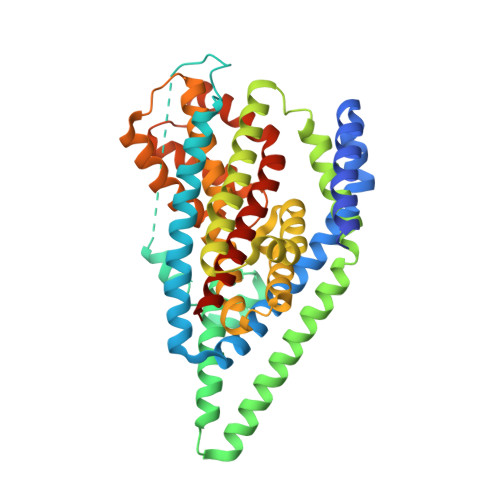The high-energy transition state of the glutamate transporter homologue GltPh.
Huysmans, G.H.M., Ciftci, D., Wang, X., Blanchard, S.C., Boudker, O.(2021) EMBO J 40: e105415-e105415
- PubMed: 33185289
- DOI: https://doi.org/10.15252/embj.2020105415
- Primary Citation of Related Structures:
6V8G - PubMed Abstract:
Membrane transporters mediate cellular uptake of nutrients, signaling molecules, and drugs. Their overall mechanisms are often well understood, but the structural features setting their rates are mostly unknown. Earlier single-molecule fluorescence imaging of the archaeal model glutamate transporter homologue Glt Ph from Pyrococcus horikoshii suggested that the slow conformational transition from the outward- to the inward-facing state, when the bound substrate is translocated from the extracellular to the cytoplasmic side of the membrane, is rate limiting to transport. Here, we provide insight into the structure of the high-energy transition state of Glt Ph that limits the rate of the substrate translocation process. Using bioinformatics, we identified Glt Ph gain-of-function mutations in the flexible helical hairpin domain HP2 and applied linear free energy relationship analysis to infer that the transition state structurally resembles the inward-facing conformation. Based on these analyses, we propose an approach to search for allosteric modulators for transporters.
- Department of Physiology and Biophysics, Weill Cornell Medicine, New York, NY, USA.
Organizational Affiliation:

















